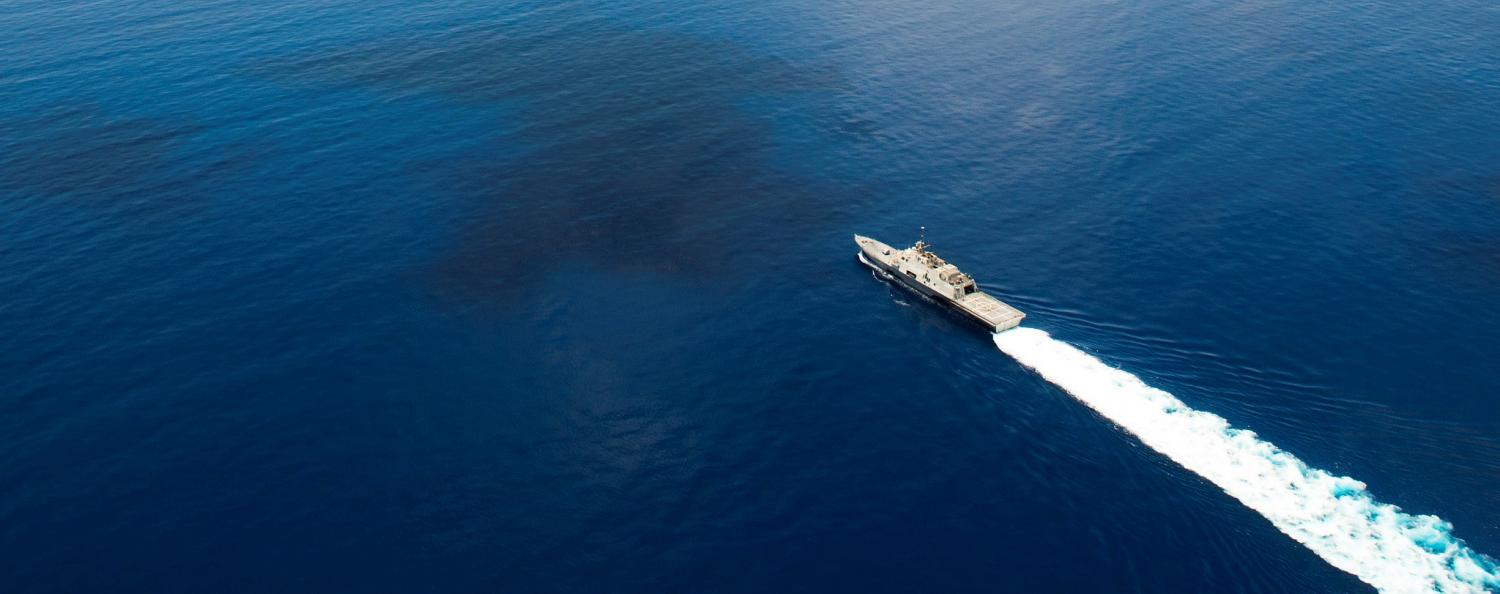Recent posts in The Interpreter (by Iain Henry, Euan Graham and James Goldrick) have commented on the presence of a Chinese intelligence-gathering ship off the Queensland Coast during Exercise Talisman Sabre. All these posts are broadly correct – the incident suggested Chinese hypocrisy with its objections to foreign military activities in its exclusive economic zone (EEZ), specifically its objections to American surveillance and intelligence-collection in its EEZ. However, we need to be careful in making assessments of what it means for Australian policy, particularly with regard to suggestions that this incident might provide a ‘green light’ for Australia to conduct freedom of navigation (FON) operations in the South China Sea. There’s a lot of devil in the detail.
For a start, the Defence statement that ‘Australia respects the rights of all states to exercise freedom of navigation in international waters in accordance with international law’ was not a good statement for the Australian Department of Defence to make. ‘International waters’ is not an expression used in the 1982 UN Convention on the Law of the Sea (UNCLOS), and Australia’s EEZ should not be referred to as ‘international waters’.
While it’s fair to describe the deployment of the Chinese ‘spy ship’ to Australia’s EEZ as unfriendly, other factors should be considered before considering what it means for Australian policy. The legal considerations all revolve around the right of another country to conduct ‘military activities’ in the EEZ of another country. China argues that countries have no such right while the US argues that these activities are high seas freedoms available in an EEZ under UNCLOS Article 58. That article provides that subject to some qualifications, the freedoms of the high seas are available to all states in another country’s EEZ.
This is a complex subject. There are several important considerations. First, due to the controversial nature of military activities during negotiations on UNCLOS, euphemistic language had to be found to cover the issue of military activities in an EEZ - for example, the phrase in Article 58 ‘other international lawful uses of the related to these freedoms, such as the operation of ships’. This is normally interpreted as covering military activities but the ambiguous language used can lead to argument. The situation is also not helped by customary international law on military activities not being clear, and that there have been no judgments of international courts to provide relevant precedents - these are unlikely because UNCLOS excludes disputes concerning military activities from compulsory dispute resolution.
Secondly, key phrases such as ‘military activities’, ‘military surveys’, and ‘surveillance’, are not defined in international law. They are not terms used in UNCLOS, which in turn does not define relevant terms, such as ‘marine scientific research’, ‘hydrographic survey’, ‘survey’ and ‘research’.
Thirdly, military activities can cover a wide range of operations – everything from passive intelligence or surveillance through to full scale naval operations. The activities of the Chinese vessel in the Coral Sea are not the same as the FON and some military activities that the USN has been conducting in the South China Sea. Much depends on whether the activity is passive or active in nature with passive activities generally being more acceptable – because they are less likely to conflict overtly with the interests of the coastal State. For example, active oceanographic research by a military vessel in an EEZ might impinge on a coastal State’s jurisdiction over marine scientific research, and flights by military intelligence gathering aircraft in an EEZ that include ‘triggering’ a response from the coastal State’s defences might be incompatible with other provisions of UNCLOS, particularly those related to the peaceful uses of the sea.
Lastly and most importantly, UNCLOS makes clear that countries exercising their rights and duties in the EEZ of another country should do so with ‘due regard’ to the rights and duties of that country. Freedoms of navigation and overflight in the EEZ of another country are not absolute. They must have ‘due regard’ to the rights and duties of the coastal State. This is a major qualification that the United States regularly fails to recognise.
For example, the US Congressional Research Service produced a report in 2015 entitled Maritime Territorial and Exclusive Economic Zone (EEZ) Disputes Involving China: Issues for Congress. That report did not acknowledge the ‘due regard’ requirement or the jurisdiction of coastal States over marine scientific research and the protection and preservation of the marine environment in their EEZs.
Most recently, the eminent Belfer Center at the Harvard Kennedy School issued a document Freedom of Navigation in the South China Sea: A Practical Guide. This simply said ‘The exclusive economic zone is considered part of international waters. States do not have the right to limit navigation in the exclusive economic zone’. Startlingly, there was no reference to the ‘due regard’ qualification.
All this looks as though the United States is going back to its position during negotiations on UNCLOS, and setting aside the carefully balanced nature of the EEZ regime. In negotiating UNCLOS, the United States argued that the EEZ was an extension inwards of the high seas while most coastal States viewed the EEZ as an extension outwards of their territorial sea. The compromise saw the EEZ established as a zone sui generis neither high seas nor territorial sea subject to its own legal regime that includes the issues mentioned above. Now the United States is still trying to paint the EEZ as part of the high seas when it comes to freedoms of navigation and overflight.
Unlike the United States, Australia is a party to UNCLOS. We should not think of the EEZ as part of ‘international waters’, and we must acknowledge the ‘due regard’ requirement. And in view of the complex nature of the topic we should not view the presence of the Chinese intelligence collection vessel as justification for Australia to undertake FON around Chinese claimed islands in the South China Sea. The two situations are very different.

